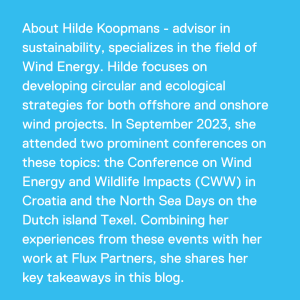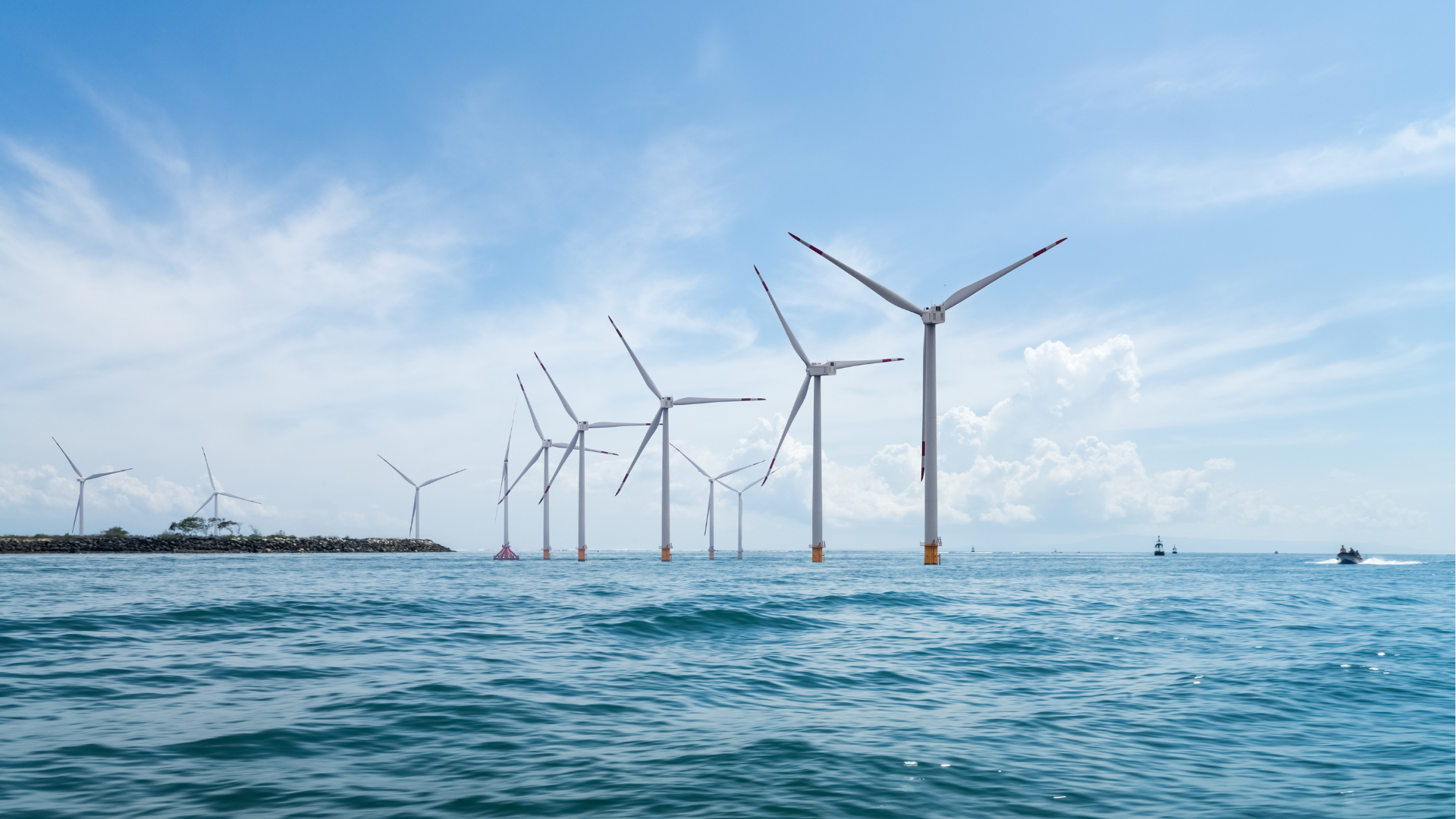Nature as non-price criteria: essential for offshore wind
 Globally, there are ambitious goals for the development of wind farms as an essential part of the energy transition to combat climate change. While wind farms contribute to the global reduction of biodiversity loss and other negative effects on ecosystems, they can also affect local ecosystems negatively. Implementing non-price criteria in offshore tenders is a way to address these effects, which is fortunately getting more and more support internationally. Flux advocates for the use of well-designed criteria, as our experience shows that this approach empowers developers to innovate and go above the minimum. We believe this is a vital step forward in the energy transition.
Globally, there are ambitious goals for the development of wind farms as an essential part of the energy transition to combat climate change. While wind farms contribute to the global reduction of biodiversity loss and other negative effects on ecosystems, they can also affect local ecosystems negatively. Implementing non-price criteria in offshore tenders is a way to address these effects, which is fortunately getting more and more support internationally. Flux advocates for the use of well-designed criteria, as our experience shows that this approach empowers developers to innovate and go above the minimum. We believe this is a vital step forward in the energy transition.
Energy transition and nature conservation
European countries have ambitious goals for the development of wind energy, especially considering current supply chain bottlenecks. For example, the Dutch target for offshore wind capacity is 4.5 GW by 20232, 21 GW by 2030 and 70 GW by 2050 as stated in the Ostend Declaration published on 24th of April 2023.
Parallel to the energy transition there is also an alarming decline in nature and the quality of ecosystems. Luckily, attention is growing towards the need for nature restoration and conservation. For example, the European Commission recently proposed the Nature Conservation Law, and the Dutch government started an extensive program for nature restoration.
Local effects
In the long term, wind energy should contribute to a reduction of climate change and, therefore, reduce its negative effect on nature. However, wind farms do affect ecosystems locally as is stated by EU-auditors. Blades can collide with birds and bats, and the installation noise of the foundations disturbs marine mammals. On the positive side, there’s no fishing allowed in the wind farm, and the foundations can introduce new habitats for fish and benthos. Both of these factors can contribute to a richer ecosystem. All effects should be addressed when developing a wind farm.
Wind energy’s ecological impact
The total effect of one wind farm is not always known, let alone the cumulative effects of multiple wind farms. Since these won’t show on project level, one of the recurring topics during the conferences was “How many wind farms are too many?” This is not even taking into account all other offshore factors that put pressure on the ecosystem such as fisheries, sea extraction and recreation.
When accelerating the development of wind energy, the cumulative effects should be taken into account when assessing the carrying capacity of the ecosystem. It’s important to realise the energy transition in the most ecological way possible by preventing, mitigating, and compensating for negative effects.
Cross-border collaboration
Another takeaway is that there is a need to look across national or project borders because ecosystems do not stop at these borders; therefore, solutions and collaborations should not either.
For example, if species migrate and there are mitigation measures applied in one project along their route, but further along the route these mitigation measures are not applied, then the problem isn’t solved. To contribute to a wind energy strategy on an ecosystem level, collaboration and knowledge sharing between developers, governments, and researchers should be improved.
Lastly, there is a need to focus on the dominant effects and knowledge gaps, as well as the ability to act on the outcomes. Be cautious about staying in research mode on the least dominant effects. Capacity in the ecology field is limited, and this could slow down the energy transition.
The need for non-price criteria
To address these ecological challenges in wind energy development, there is a need for action, innovation, and research. Incorporating non-price criteria (NPC) in offshore wind tenders by contracting authorities, primarily governments, can accelerate ecological innovation. The inclusion of NPC in offshore wind tenders has been adopted by the Netherlands and some other European countries, but it’s not standard practice yet.
Drawing from Flux’ experience across various sectors, we noticed that setting qualitative criteria which are set above minimum requirements encourages market parties with high ambitions in this field to take extra measures and thereby stimulating innovative solutions. Well-weighted NPC also help prevent a race to the financial bottom, a trend currently observed in auctions where price is the primary focus. This was also underlined by Ursula von der Leyen during her annual State of the European Union speech in September 2023.
Flux strongly advocates for the widespread use of NPC, assigning them a dominant weight compared to price and allowing for differentiation on the topics. This approach creates a level playing field for all bidders, enabling both sustainable and innovative companies to participate in the competition, rather than just those who focus on price. Fortunately, the support for NPC is growing, as evidenced by initiatives like the EU New-Zero Industry Act and even the Rabobank weighing in on the topic.
In conclusion:
- An integral approach is essential to realize the energy transition while minimizing its effect on the environment. Implementing non-price criteria in tenders is a promising approach to address these effects.
- As Flux, we recommend policy makers and contracting authorities apply well-designed and well-weighted non-price criteria in renewable energy tenders in order to attract innovative and sustainable developers
- One key criterion should focus on preventing, mitigating, and compensating the most dominant ecological effects, going beyond minimal requirements where it’s possible to differentiate.
- Ecological solutions and research should also contribute to our understanding of the cumulative effects of multiple wind farms, which remain a significant knowledge gap.
- Since ecosystems don’t stop at project or national borders, governments, researchers, and developers should collaborate and share knowledge across borders. By working together, we can collectively address ecological challenges in the global context.


